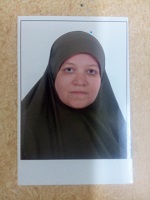Along two years (1/2004 – 11/2005), a study was set up in Upper Egypt to follow acutely poisoned cases by the most commonly used insecticides which are organophosphates, carbamates and inorganic phosphorus compounds. The recorded cases were seventy in number, thirty-two of them were males and thirty-eight were females. Their ages ranged from twelve to seventy-three years. Most of the cases were between the second, third and fourth decades of life. Thirty-eight cases were poisoned by organophosphates, twenty-five cases by carbamates, and seven cases by inorganic phosphorus compounds. It was found that sixty-one cases were suicidal; four of them were saved (two males and two females) by rapid atropinization and gastric lav a study age on admission to hospital. The homicidal cases were three (two males and one female), all of them were saved. Accidental exposure by ingestion of contaminated food or drinks was also recorded in six cases (two males and four females). Severe weakness, abdominal pain, nausea and vomiting were the common manifestations of the cases, which appeared immediately after ingestion. Fatal cases showed a characteristic postmortem picture in the form of frothy discharge coming from the mouth and the nose, cyanosis of lips and fingers, generalized congestion of the internal organs and mucous membranes. In most cadavers the stomach showed severe congestion associated with multiple small ulcers. The residue of the ingested substance was found in the stomach with a characteristic odor. Samples were taken and sent to chemical laboratory of Medico-Legal Department for analysis . Detection of insecticides was done by thin layer chromatography ( TLC ) , and gas chromatography with mass spectrometry ( GC-MS ) .

